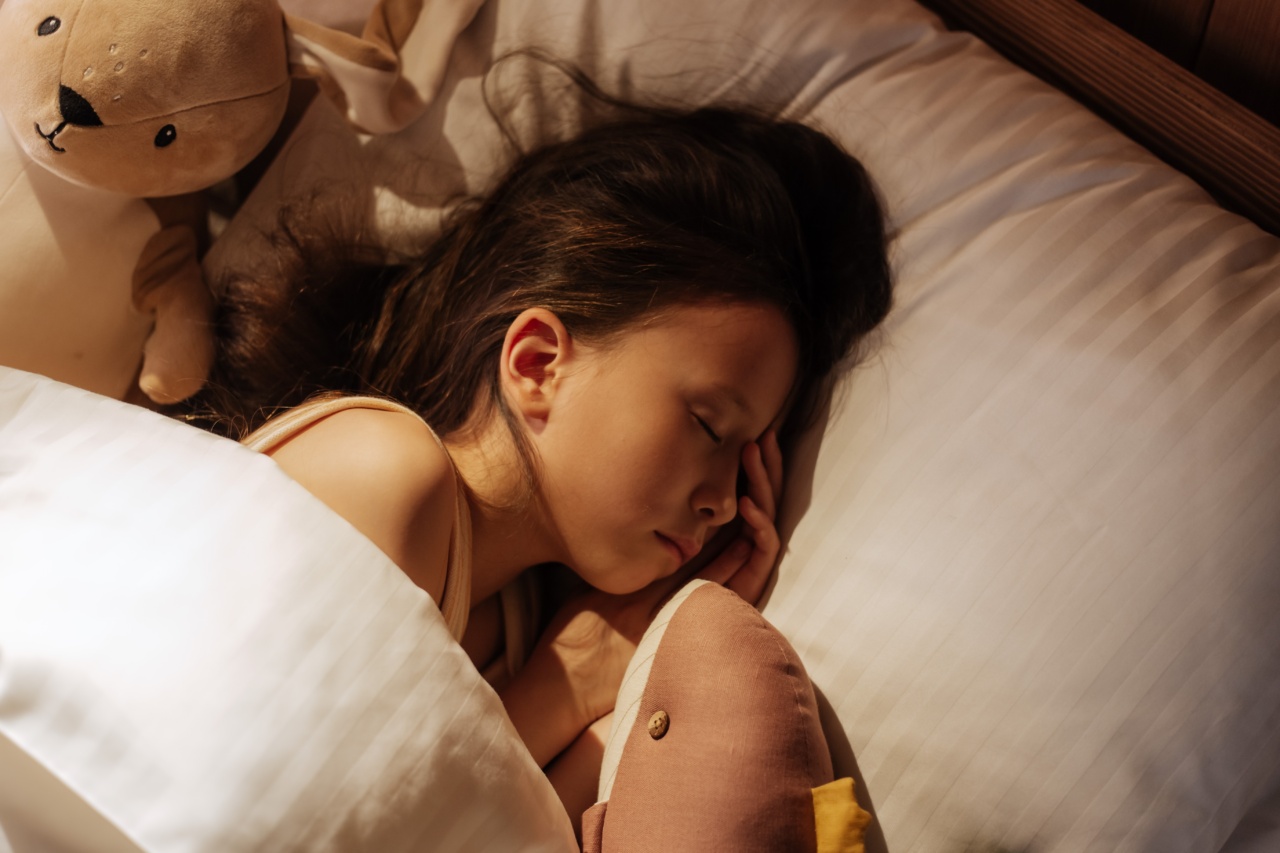Allergic rhinitis, also known as hay fever, is a common condition that affects both adults and children. However, it is particularly prevalent among children, affecting up to 40% of them worldwide.
This chronic condition often has a significant impact on a child’s quality of life, including their ability to concentrate, sleep, and even participate in physical activities. In this article, we will explore the link between allergic rhinitis and children, including its causes, symptoms, and available treatment options.
The Causes of Allergic Rhinitis in Children
Allergic rhinitis occurs when a child’s immune system overreacts to allergens, triggering an inflammatory response in the nasal passages. The specific causes of allergic rhinitis can vary from child to child, but the most common triggers include:.
- Pollen: Pollen from trees, grasses, and weeds is a common cause of allergic rhinitis, with symptoms typically worsening during the spring and fall seasons.
- Dust Mites: These microscopic organisms are present in most households and thrive in bedding, carpets, and upholstery, causing allergic reactions in susceptible individuals.
- Pet Dander: Proteins found in the skin cells, saliva, and urine of pets, such as cats and dogs, can trigger allergic rhinitis.
- Mold: Mold spores found in damp environments, such as bathrooms and basements, can trigger allergic reactions when inhaled.
- Smoke: Irritants like cigarette smoke or wood-burning stoves can exacerbate allergic rhinitis symptoms in children.
Symptoms of Allergic Rhinitis in Children
Recognizing the symptoms of allergic rhinitis in children is crucial for early diagnosis and effective management. The most common symptoms include:.
- Sneezing: Children with allergic rhinitis often experience frequent bouts of sneezing, which may occur in rapid succession.
- Nasal Congestion: The nasal passages of affected children may become blocked, leading to difficulty breathing through the nose.
- Runny Nose: Children may have a persistent, clear discharge from their nose due to the increased production of mucus.
- Itchy Nose and Throat: Children with allergic rhinitis often complain of an itchy or scratchy sensation in their nose and throat.
- Watery Eyes: Excessive tearing or watery eyes are common symptoms, often accompanied by redness and itching.
- Coughing: A persistent cough may develop as a result of postnasal drip, where mucus drips down the throat from the back of the nose.
- Loss of Smell: In some cases, children may experience a reduced sense of smell or taste due to nasal congestion.
Diagnosing Allergic Rhinitis in Children
Diagnosing allergic rhinitis in children often involves a combination of medical history evaluation and diagnostic tests. A detailed discussion with the child’s parents or caregivers about their symptoms and potential triggers is crucial.
Some common diagnostic approaches used by healthcare professionals include:.
- Skin Prick Test: This test involves applying small amounts of suspected allergens to the skin using a tiny needle. If an allergic reaction occurs, the skin will become red, itchy, and swollen at the test site.
- Specific IgE Blood Test: A blood sample is taken to measure the levels of specific IgE antibodies produced in response to various allergens. Elevated levels of specific IgE can help identify the triggers.
- Elimination Diet: In some cases, an elimination diet may be recommended to identify food allergens that could be contributing to the symptoms.
Treatment Options for Allergic Rhinitis in Children
Managing allergic rhinitis in children involves a multidisciplinary approach that aims to reduce exposure to allergens, alleviate symptoms, and improve overall quality of life. Some common treatment options include:.
- Allergen Avoidance: Identifying and avoiding triggers is crucial in managing allergic rhinitis. This may involve measures such as using dust mite-proof bedding, keeping windows closed during high pollen seasons, and minimizing exposure to pets.
- Medications: Over-the-counter and prescription medications can help alleviate symptoms. Antihistamines are commonly used to reduce sneezing, itching, and runny nose, while nasal corticosteroids can help decrease nasal inflammation.
- Immunotherapy: Immunotherapy, also known as allergy shots, is a long-term treatment option that involves gradually increasing exposure to allergens to desensitize the immune system. This can help reduce the severity of allergic reactions over time.
- Nasal Irrigation: Saline nasal rinses or sprays can help flush out allergens from the nasal passages, providing temporary relief from congestion and other symptoms.
- Education and Support: Providing education and support to children and their parents is essential for managing allergic rhinitis. This includes teaching children how to avoid triggers, recognize early symptoms, and follow prescribed treatment plans.
Impact of Allergic Rhinitis on Children
Allergic rhinitis can have a significant impact on a child’s daily life and overall well-being. When left unmanaged, it may lead to several complications, including:.
- Sleep Disturbances: Nasal congestion and other symptoms can disrupt a child’s sleep, leading to fatigue, irritability, and poor concentration.
- Impaired School Performance: Constant sneezing, runny nose, and itchiness can interfere with a child’s ability to concentrate, participate in classroom activities, and perform academically.
- Recurrent Ear Infections: The inflammation and blockage caused by allergic rhinitis can increase the risk of developing middle ear infections, resulting in pain, hearing difficulties, and potential speech delays.
- Asthma Exacerbations: Children with allergic rhinitis are at a higher risk of developing or worsening asthma symptoms, as the two conditions often coexist and share similar triggers.
- Psychological Impact: The chronic nature of allergic rhinitis and its impact on daily life can lead to feelings of frustration, embarrassment, and low self-esteem in children.
Preventing Allergic Rhinitis in Children
While it may not be possible to completely prevent allergic rhinitis, there are measures that parents can take to reduce the risk and severity of symptoms in their children. These preventive strategies include:.
- Limiting Exposure to Allergens: Identifying and minimizing exposure to known triggers, such as pollen, dust mites, or pet dander, can help reduce the likelihood of developing allergic rhinitis.
- Promoting Good Indoor Air Quality: Regularly cleaning and vacuuming the house, using air purifiers, and maintaining optimal humidity levels can help reduce the concentration of allergens indoors.
- Encouraging Healthy Habits: A balanced diet rich in fruits and vegetables, regular exercise, and adequate sleep can help boost the immune system and potentially reduce the severity of allergic reactions.
- Consulting an Allergist: If there is a family history of allergies or if a child is already experiencing allergy-like symptoms, consulting an allergist can help identify potential triggers and develop a personalized management plan.
Conclusion
Allergic rhinitis is a common condition that affects a significant number of children worldwide. Understanding the causes, symptoms, and available treatment options is crucial for managing this chronic condition effectively.
By identifying and avoiding triggers, using appropriate medications, and seeking medical advice when needed, children with allergic rhinitis can lead a healthier and more fulfilling life, free from the burden of persistent symptoms.






























